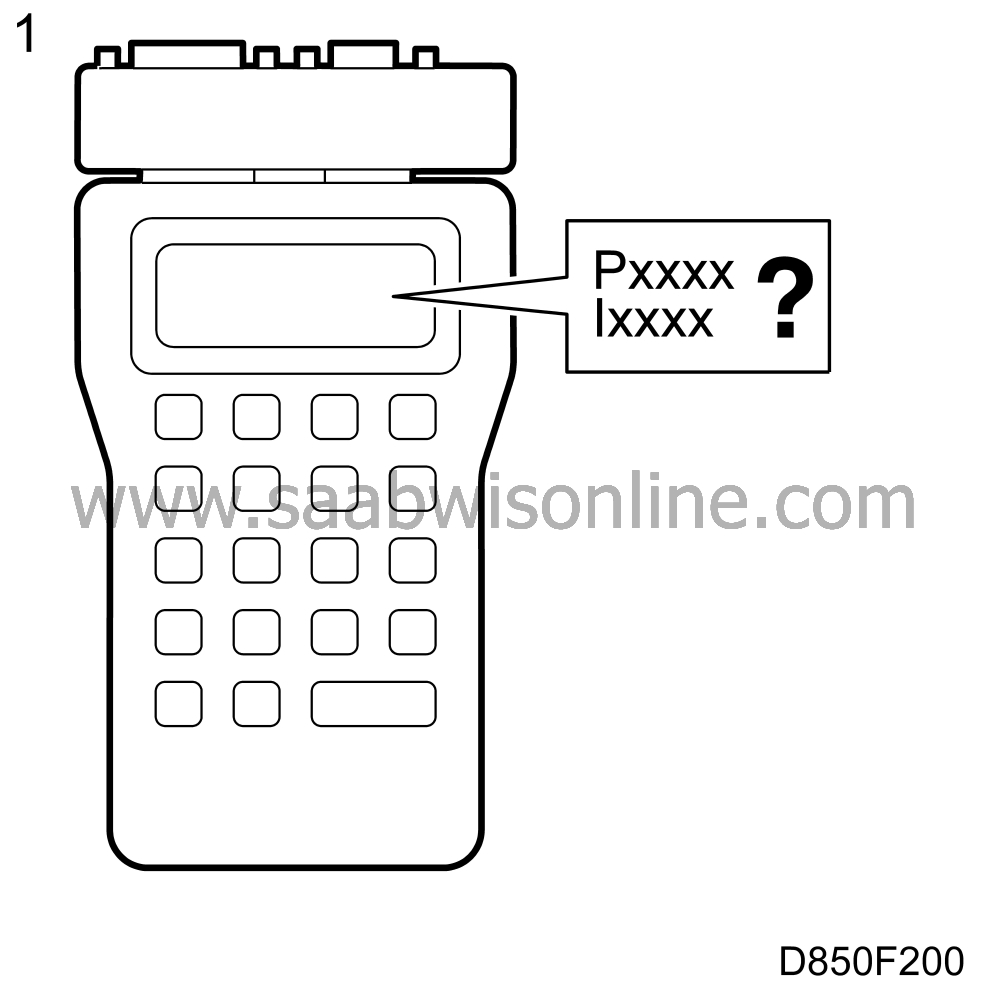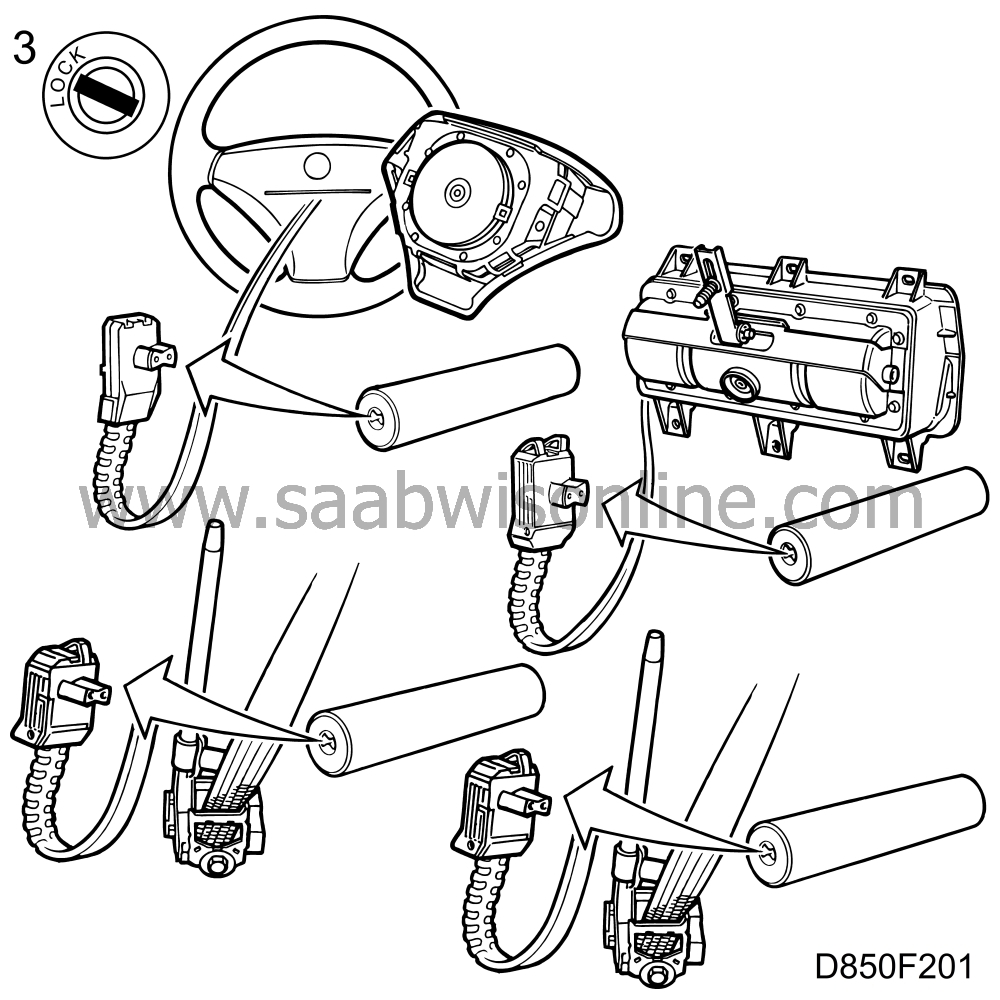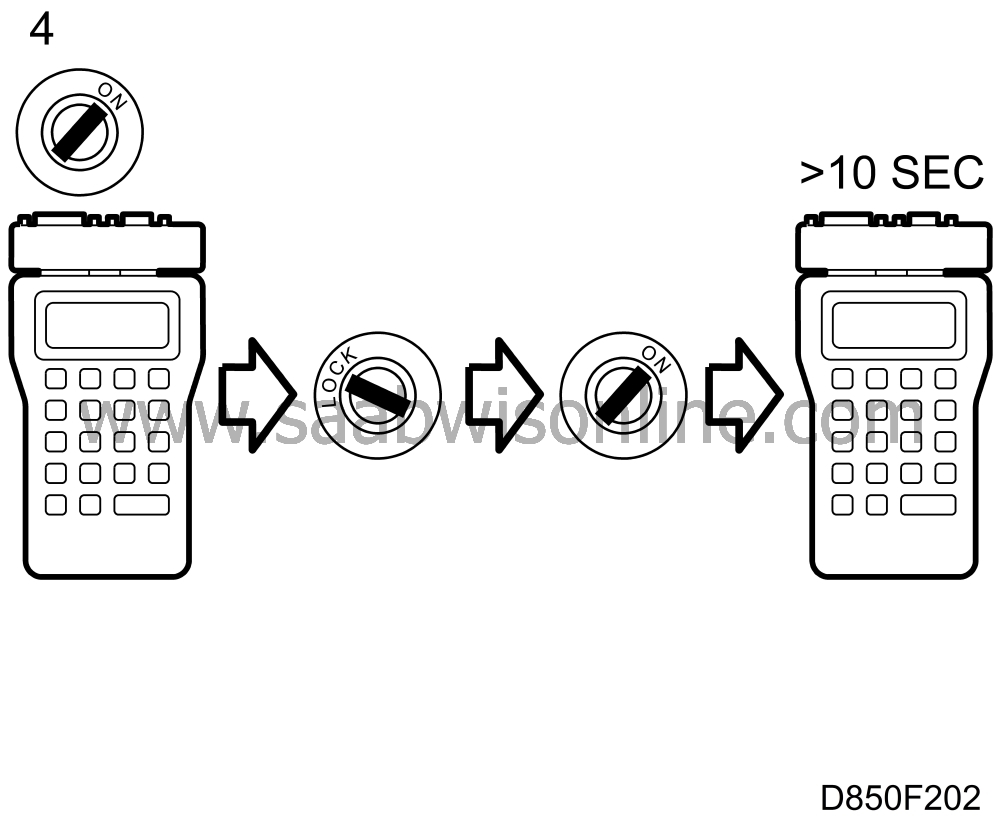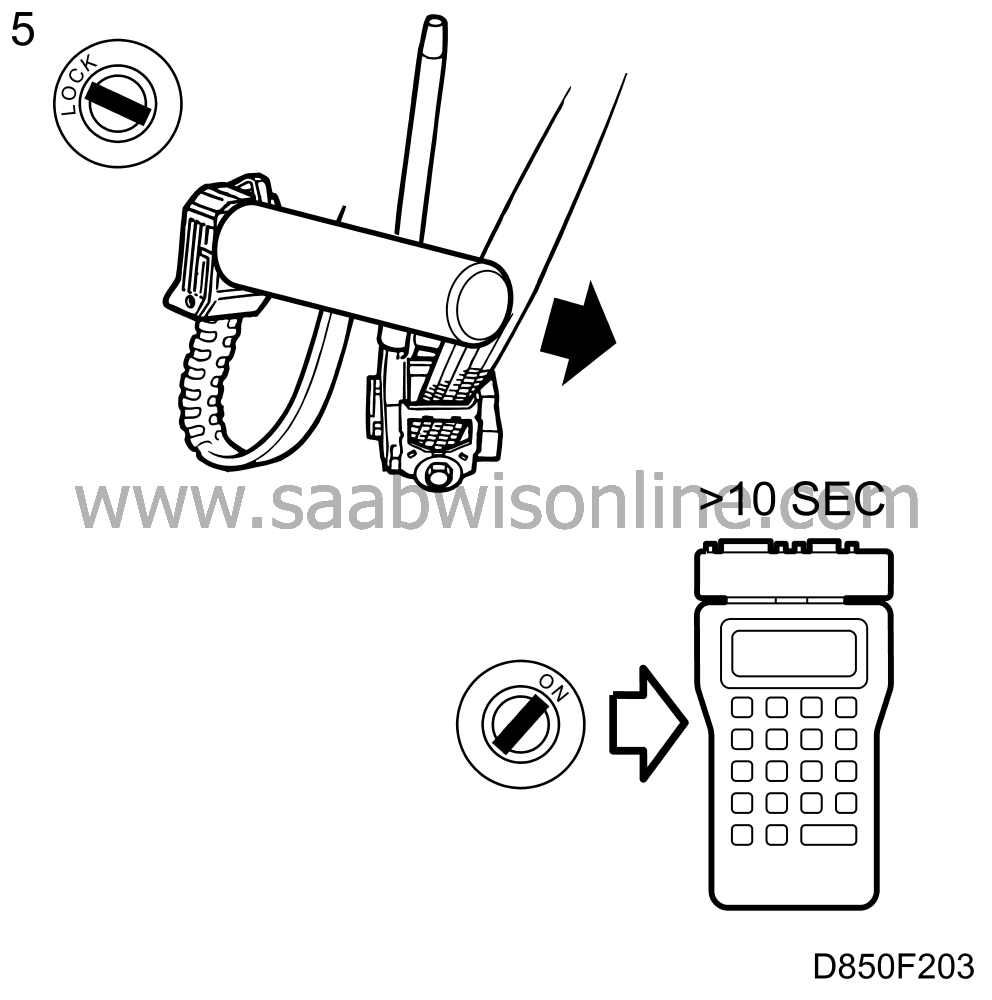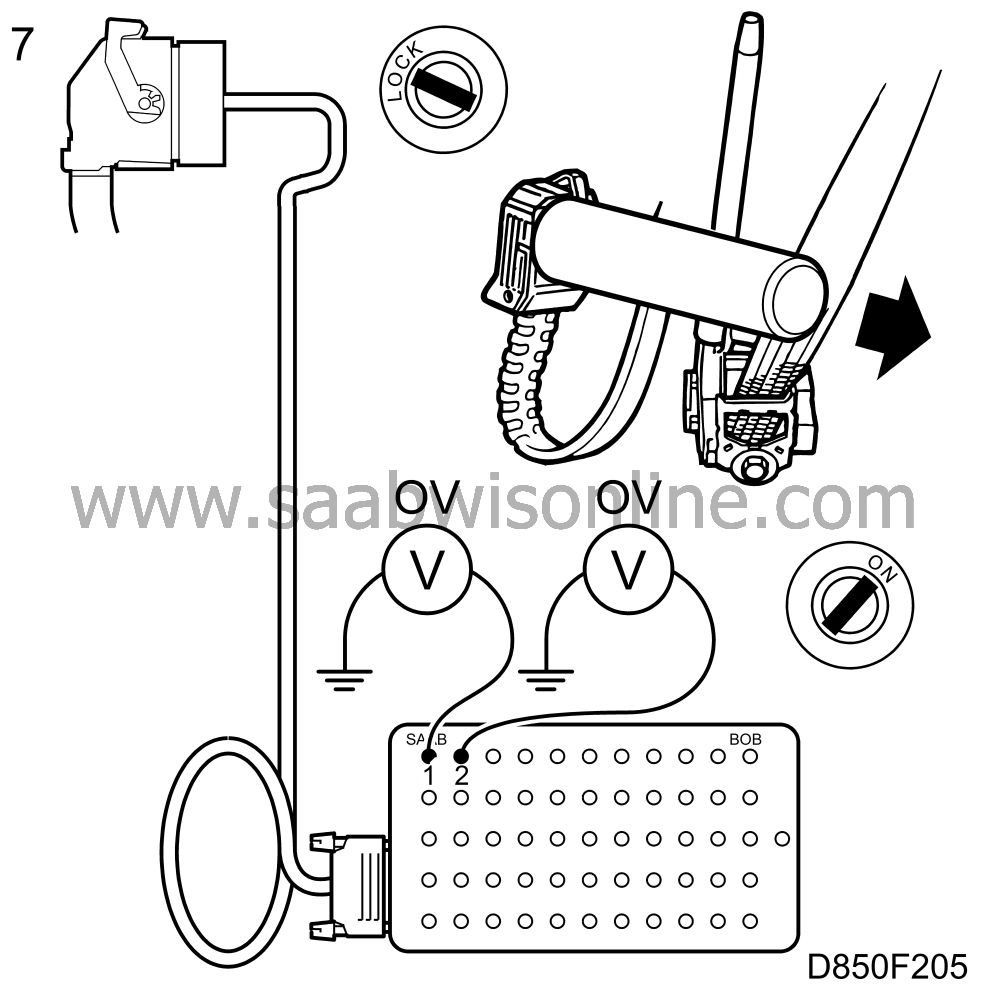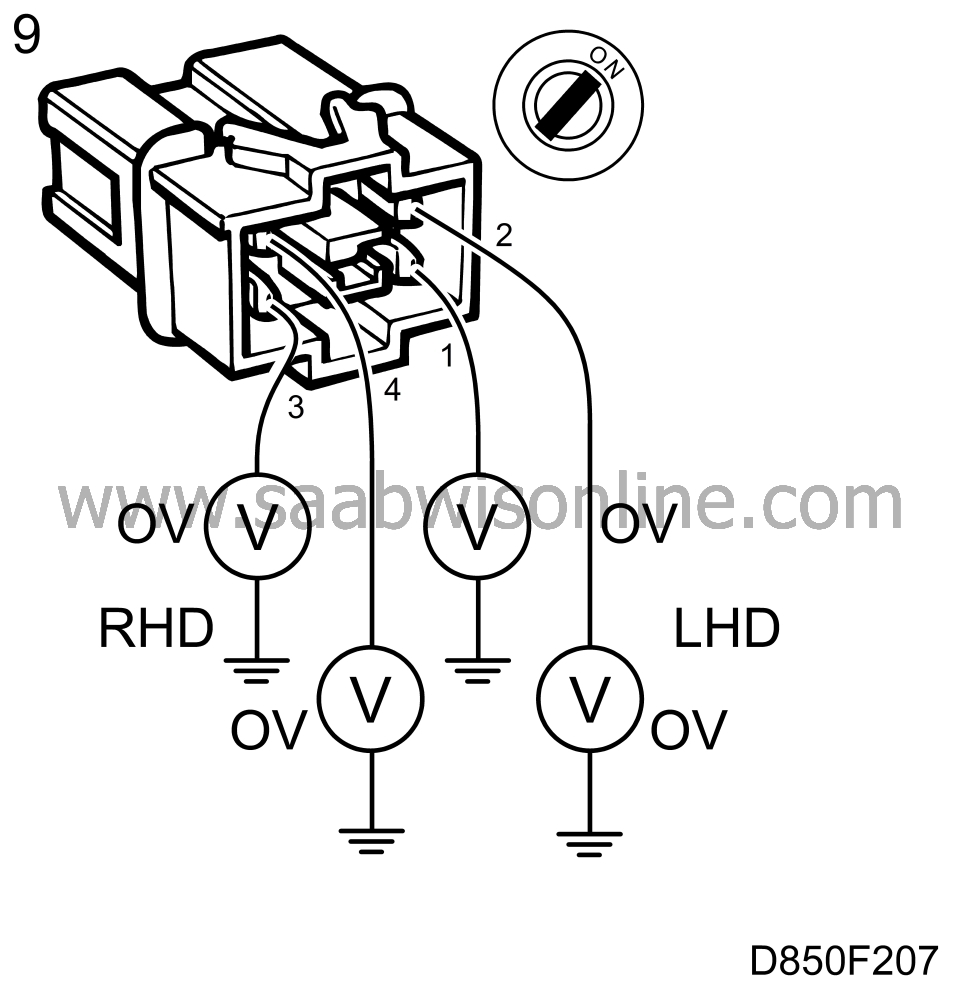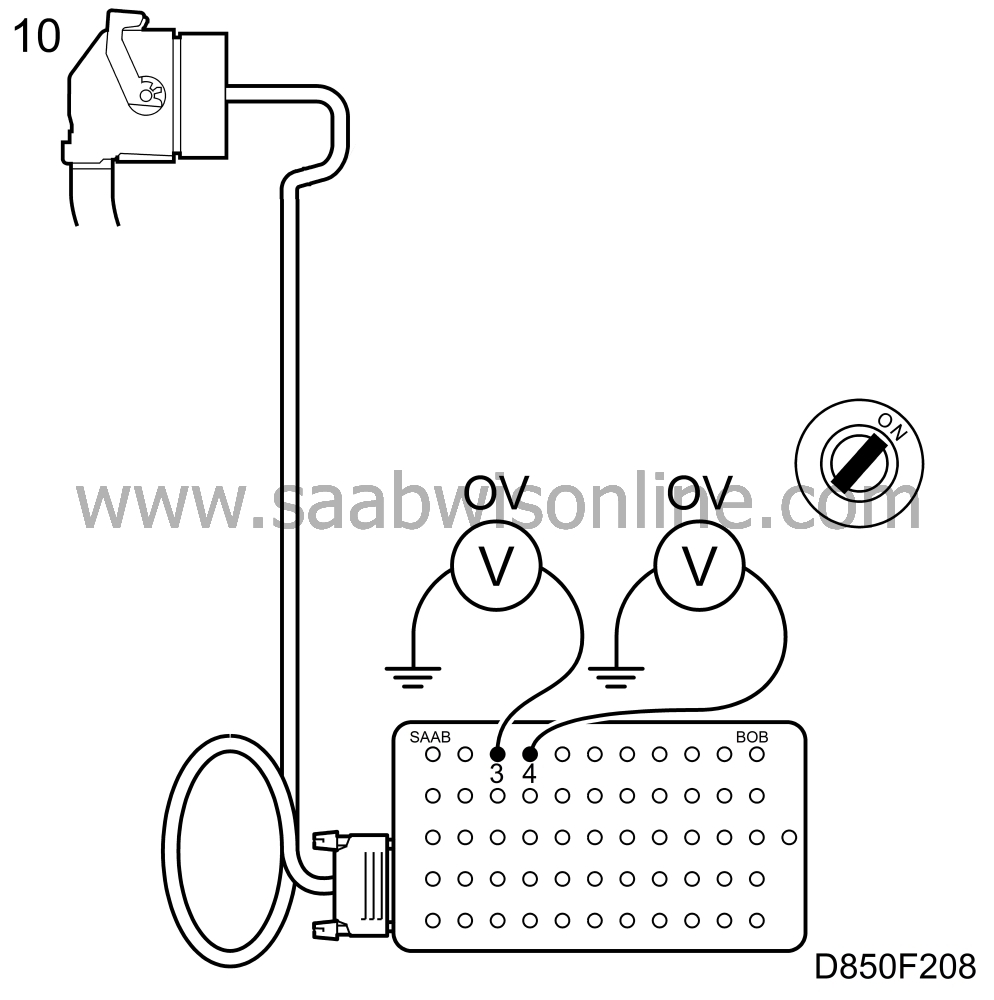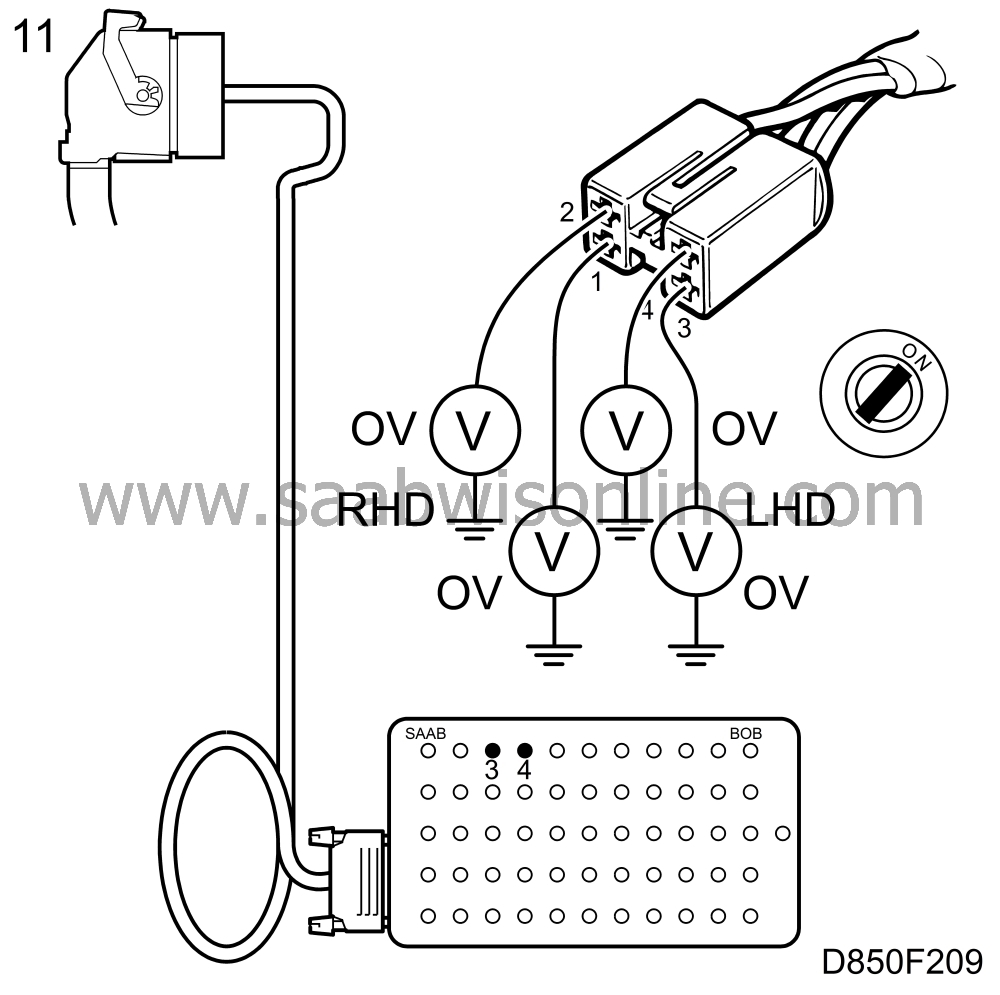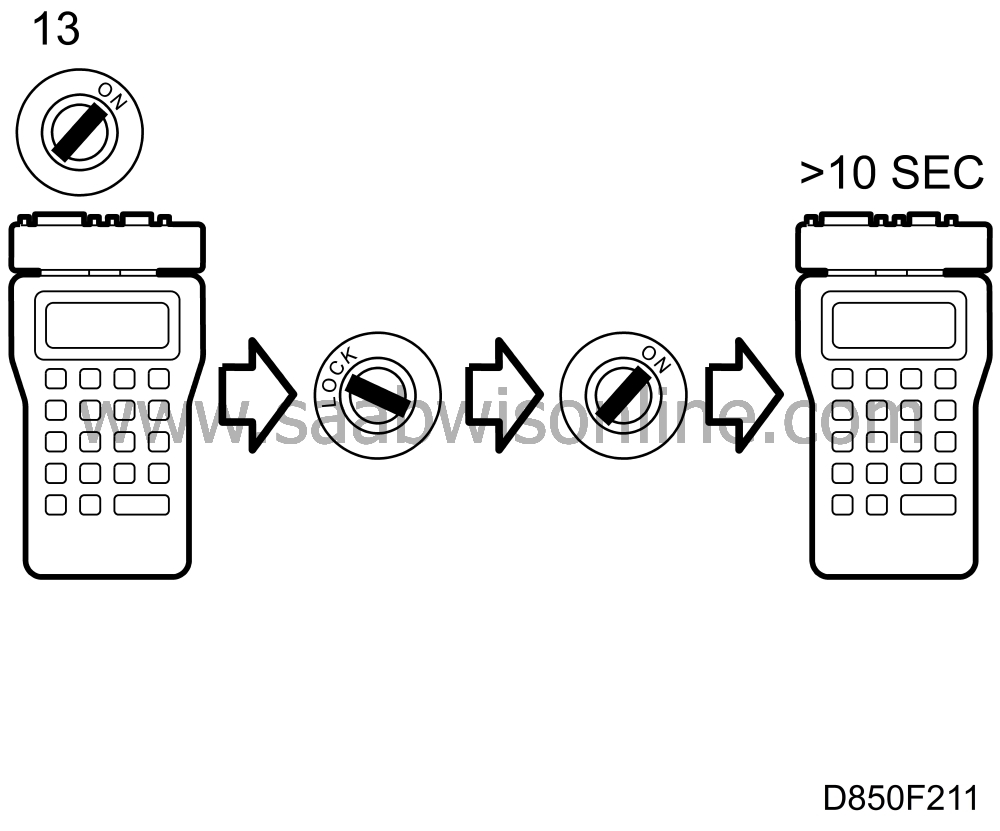B2443, B2448
| B2443, B2448 |
Seat belt tensioner, driver / Seat belt tensioner, passenger, short circuit to battery plus
The reference resistor is available in two versions. A newer, part no. 86 12 095 , and an older, part no. 84 71 153
, and an older, part no. 84 71 153
 . The new type has closer tolerance limits and should be used for more reliable diagnosis. The illustrations in the following chapter show the older type of reference resistor.
. The new type has closer tolerance limits and should be used for more reliable diagnosis. The illustrations in the following chapter show the older type of reference resistor.
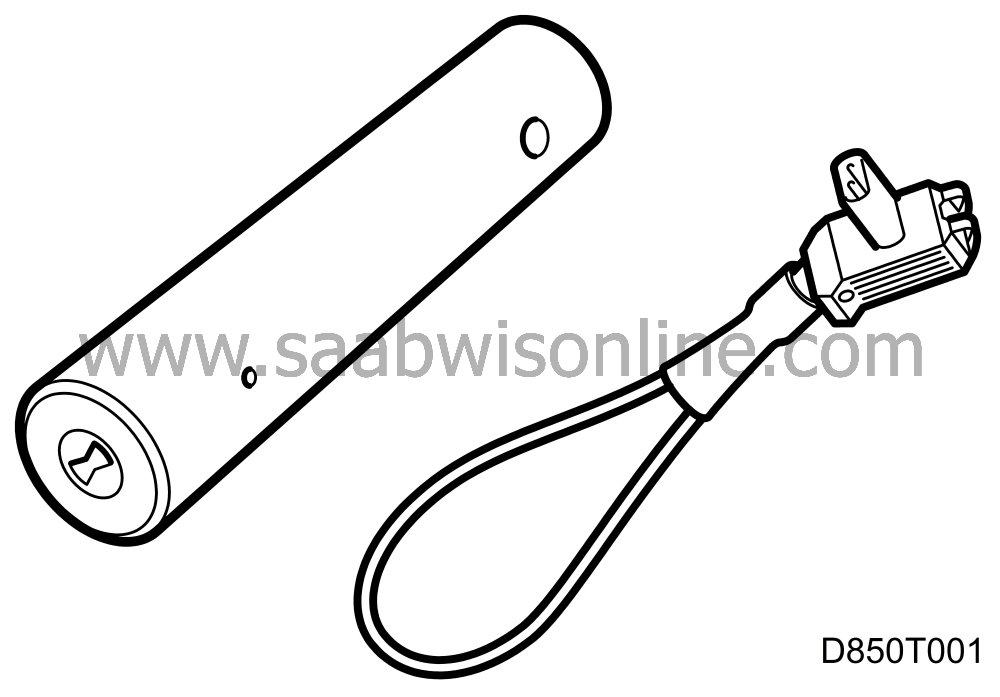
Diagnostic procedure
| 2. |
The fault is intermittent. Try to provoke the fault at each test section in the continued fault diagnosis.
Move the connectors and cables and turn the steering wheel while testing. Go to point 3. |
|
| 3.a. |
Remove the glove-box and unplug the connector on the back of the passenger airbag.
|
| 3.b. |
Connect the reference resistor 84 71 153 to the connector.
Remove the trim on the B-pillars. Unplug the connectors to the seat belt tensioners. Connect reference resistor 84 71 153 to the connector. Go to point 4. |

